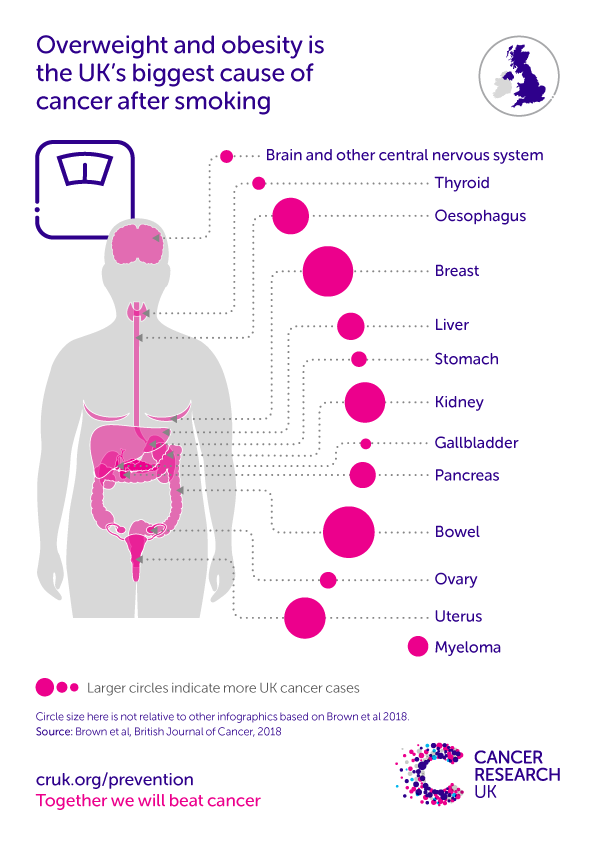Family history
Having a family history of CNS tumours is associated with increased risk of developing a brain tumour, pooled analyses have shown.[1,2] Having a parent with a CNS tumour is associated with a 70% increased risk of being diagnosed with a brain or CNS tumour oneself, compared with the general population, and having a sibling diagnosed is associated with a doubling of risk.[1,2]
Those with any first-degree relative (parent, sibling or child) diagnosed with glioma have a 77% increased risk of developing glioma themselves, and a 2.2- to 2.6-fold risk increase if the affected relative is a sibling.[2,3]
Having a parent or sibling with meningioma confers a more than doubled (130% increased) risk of meningioma.[2]
The magnitude of risk increases associated with family history varies by brain tumour subtype, but small sample sizes for these less common tumours preclude firm conclusions.[2]
Neurofibromatoses (NF)
Neurofibromatoses (NF)  are a group of genetic conditions in which benign (non-invasive) growths affect the nervous system. NF type 1 (NF1) is thought to affect around 1 in 2,700 live births in the UK, whilst NF type 2 (NF2) affects around 1 in 33,000.[4]
are a group of genetic conditions in which benign (non-invasive) growths affect the nervous system. NF type 1 (NF1) is thought to affect around 1 in 2,700 live births in the UK, whilst NF type 2 (NF2) affects around 1 in 33,000.[4]
The risk of brain and CNS tumours is at least 23-43 times higher in NF1 patients than in the general population.[5,6] The risk of CNS tumours excluding those in the brain may be considerably higher.[6] Relative risk of brain tumours in NF1 patients increases with patient age.[7] Most NF1-associated brain tumours are gliomas.
Both children and adults with NF1 have an increased risk of astrocytoma, with the tumour grade often higher in adults than children.[7] 5-25% of children with NF1 develop optic pathway gliomas.[7]
NF2 patients are commonly diagnosed with bilateral vestibular schwannomas (acoustic neuromas). These affect 90-95% of NF2 patients, and they are typically benign but can cause hearing impairment.[8] Meningiomas affect 45-58% of NF2 patients, and usually arise at a younger age in these patients than in the general population.[8]
Tuberous sclerosis complex (TSC)
Tuberous sclerosis complex (TSC)  causes benign tumors to grow in the brain and elsewhere. The prevalence of TSC is estimated at around 1 in 25,000.[9,10] Up to 20% of TSC patients develop subependymal giant-cell astrocytomas.[11]
causes benign tumors to grow in the brain and elsewhere. The prevalence of TSC is estimated at around 1 in 25,000.[9,10] Up to 20% of TSC patients develop subependymal giant-cell astrocytomas.[11]
Li-Fraumeni syndrome
Li-Fraumeni syndrome  is a very rare genetic condition associated with increased risk of early-onset brain tumours and other cancer types. Astrocytomas, glioblastomas, medulloblastomas, and choroid plexus carcinomas are the most common brain tumours seen in this population.[12]
is a very rare genetic condition associated with increased risk of early-onset brain tumours and other cancer types. Astrocytomas, glioblastomas, medulloblastomas, and choroid plexus carcinomas are the most common brain tumours seen in this population.[12]
Von Hippel-Lindau syndrome
Von Hippel-Lindau syndrome  is thought to occur in around 1 in 43,000 live births in the UK.[2] Haemangioblastomas of the brain or spinal cord occur in 60-80% of people with this condition.[13]
is thought to occur in around 1 in 43,000 live births in the UK.[2] Haemangioblastomas of the brain or spinal cord occur in 60-80% of people with this condition.[13]
Turner syndrome
Turner syndrome  affects around 1 in 2,000 female live births.[14] The risk of CNS tumours is around 4 times higher for Turner syndrome patients than the general population, with particularly increased risks of meningioma and childhood brain tumours.[15]
affects around 1 in 2,000 female live births.[14] The risk of CNS tumours is around 4 times higher for Turner syndrome patients than the general population, with particularly increased risks of meningioma and childhood brain tumours.[15]
Turcot’s syndrome
Turcot’s syndrome is associated with both brain and bowel tumours. Turcot’s syndrome type 1 is associated with early-onset gliomas, whilst type 2 is associated with medulloblastoma.[16]
Gorlin syndrome
Gorlin syndrome  (nevoid basal cell carcinoma) is thought to occur in around 1 in 15,000 live births in the UK.[2] Around 5-10% of people with this condition develop medulloblastomas.[17]
(nevoid basal cell carcinoma) is thought to occur in around 1 in 15,000 live births in the UK.[2] Around 5-10% of people with this condition develop medulloblastomas.[17]





